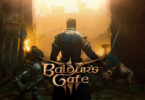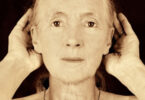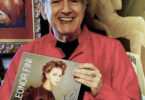Recently, I had the pleasure of visiting ten artists participating in the “Third International Artists Residency” show at the Red Barn in Beacon, NY. The driving force behind this enterprise was visionary artist and teacher, Basha Maryanska, who brought together these exceptional individuals for two weeks in May to explore personal creativity through presentations, workshops and a group exhibit.
For the Residency, Maryanska chose artists from different backgrounds encompassing the worlds of among others, business and medicine. The program nurtured personal creative vocabularies through the artists’ immersions in the art-making process, joining together an intimate, congenial group where the ultimate outcome was work both expressive and inventive.
A founder of River Winds Gallery, painter Virginia Donovan’s background was in mathematics and business. Late in her professional career, she began painting watercolors and added oils and acrylics to her portfolio. With her family’s long history in the Hudson Valley, Donovan drew upon her great love of the area in much of her subject matter. Painting spontaneously, she termed her latest pieces, “psychological abstractions,” where the works’ titles rose from feelings experienced in the process of lifting surface pigment with palette knife, where underlying impasto areas revealed what the rutist termed “layers of oneself.” Most evident in her “Sonata in White # l” Donovan’s inherent sense of rigorous organization provided the unifying ground for lyrically brushed overlays.
Painter and craftsperson, Helen Garcia, started to work with Maryanska last year and this is her first time at the Residency. With a long background in the legal world, the freedom she found through her experiments with media und er Maryanska’s tutelage brought Garcia new ideas and techniques.Most evident in her painting, “All That Jazz,” the suggestion by her teacher to paint over a previously completed work, allowing an additional color layer to peek through, heightened the piece’s dynamism and expanded the Garcia’s ability to visualize subject matter.
Sculptor Elisabeth Frishauf’s understanding of human nature, a consequence of her practice as a psychiatrist, informed her mixed media mobiles of reused objects, and other prosaic found materials in a happy amalgam serving as commentary on the human condition. She painstakingly constructed her pieces over a period of months, subtly incorporating titles in the final results. One of her mobiles, drolly named, “Look What Fell Through My Fingers,” provided Frishauf a mischievous opportunity to scrawl verse on elongated plastic tendrils cascading from the sculpture’s base and mingling with its other hanging forms; what Frishauf termed, her “poetry in motion.” The intermixed words described elements in the piece and when read, added cohesive rhythm by making all the different patts move as one. For object choices, Frishauf employed such diverse materials as parts of circuit boards, painted signs, driftwood, chandelier crystals and miniature cars that she gleefully repurposed as mobile parts, deeming her work celebratory of humanity’s interconnectedness on our small verdant planet.
With a professional life in medical research, watercolorist of happy florals, Neela Pushparaj, also participated in the Residency. Her past work, focused on realistic depictions of plants in brilliant natural regalia, became freer here, so that her unique ability to provide pleasure and healing to viewers through her botanical color choices, transferred to more abstract and expansive work. Maryanska encouraged her to experiment and Pushparaj felt she had an artistic breakthrough in her painting, “Enlightenment” rendering a buddha figure in spontaneous abstract color passages while envisioning a lush primeval jungle as inspiration. Lifting color and using cutouts to delineate form, she expanded her technique by adding touches of opaque acrylic, enhancing luminosity.
Nick Shatford joined the Residency remotely from New Zealand through the showing of his video, “This Way to Monkey Heaven.” Drawing on memories of primordial forms from his time in the mountains of Spain, he referred subliminally to them in this video representing a “Generation X” young woman attempting to come to terms with the passage of her world from an analog to digitized one. Images were distorted before her eyes as she looked at both the past natural time, and the starkly contrasting new one of emerging manmade technological preeminence. Shatford referenced Buddhism in the title, inferring that life is not experienced on a straight trajectory, but instead, moves like a Moebius strip where reality constantly reinvents itself. Shatford seems to say the young woman, seeing so much swift societal change will experience her life as a continuum of destruction and recreation, its latest iteration as our computerized modern world .
Kamila Wojciechowicz hailed from Australia and Poland and received extensive rutistic training in Europe. Wojciechowicz’s work at the Residency primarily concerned the esoteric where she collaged mixed med is subjects into shadow box mythological pieces that were almost small stage settings. Her work was meticulously detailed with strong drawing calling upon her knowledge of paintings by Bosch and Velasquez along with images reminiscent of medieval bestiaries. The artist hand drew her subjects, scanning them onto etching paper and applying antique tinting. Influenced by the philosopher Joseph Campbell, her work examined celestial signs and symbols from psychological and spiritual perspectives.
Ilona Wojciechowska’s paintings were not just results of her time at the Residency this year. Each piece, part of a continuing series, built upon the previous one. The artist experimented with technique and her forms, presently depictions of New York City skyscrapers, were painted with a hard edged minimalist cast, combined with fluid paint applications. Ilona incorporated the Golden Ratio in her compositions, divine geometry playing into the works’ foundations. Densely placed semi-abstract buildings were cloaked in warm and cool color choices, Ilona Wojciechowska’s reactions to the physical locations of them turning a dense urban metropolis into an airy, mesmerizing dream .
Karl Volk was born in Germany and came to the United States directly after World War II. Trained in the Bauhaus Method, one of his teachers in America was Mark Rothko whose influence showed in Volk’s handling of color. An accomplished watercolorist, Volk, a great fan of Kurt Schwitters, incorporated his expressionist cultural past in parts of his pieces, most evident in his mixed media painting, “Alternative Landscape,” an over-painted semi-abstract silkscreen suggesting a walkway in Poughkeepsie, where a subtle line, anchored the richly colored composition. In much of his work, the artist tied the reality of social issues to his aesthetics, while mixing the familiar with the unexpected. Currently, he is working on a piece paying homage to the honeybee where glitter applied to areas throughout, emphasizes the insect’s beauty, serving as a reminder of this creature’s importance and vulnerability amid dangerous circumstances portending possible extinction.
Agnieszka Zak’s oils of richly ornamented scarves symbolizing multiculturalism, were also shown at the Residency. The intricate geometric patterns on the textiles contrasted with their monochromatic backgrounds, as flawlessly balanced compositions supported the painter’s passionate feelings about the importance of human diversity and cooperation among people of all nations. One of the most striking textiles, a shawl with orange elephants on a celestial blue field, adeptly rendered, underscored Zak’s deep commitment to her ideals.
The visionary force behind the success of these two weeks, Basha Maryanska, in addition to performing the role of mentor for these creative souls, displayed her remarkable talent as a painter in eight acrylics, where superbly manipulated pigment in push-pull brushwork of concentrated color demonstrated personal strength. Her dynamicpain tings, emanating from conjured images, were beautifully enriched by her listening to music while painting. This was most evident in her piece, “Allegro Moderato” inspired by Maurice Ravel’s string quartet, where Maryanska’s emotions poured out vividly in powerful strokes, expressionistic passages sharing the canvas with underlying formal structure, the contrast handled with ease.
Basha Maryanska, with her ardent belief in artistic inventiveness, once again, brought together a group of imaginative individuals who were able to realize work of intensity and scope in this teacher’s perceptive care. This third foray into in-depth study was a triumph for all, and I am confident success for these wonderful artists will continue in subsequent residencies, powered by this extraordinary human being.




